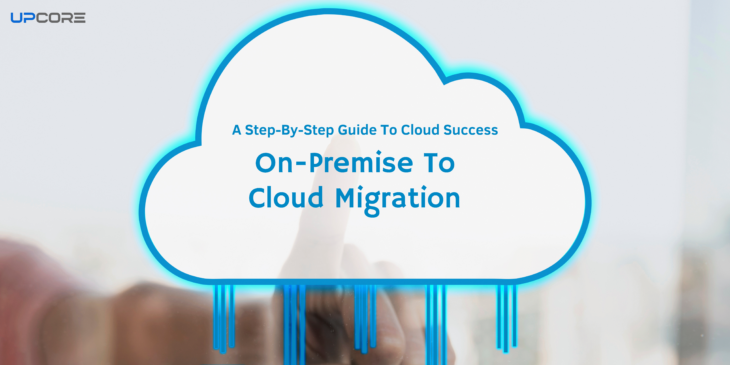
- April 11 2024
- admin
In the ever-evolving world of technology, the cloud has emerged as a transformative force, reshaping the way businesses operate and enabling unprecedented levels of agility, scalability, and cost-efficiency. As we approach 2024, the allure of the cloud continues to grow, with more and more organizations recognizing the need to migrate their on-premise systems to the cloud.
Yet, the journey from on-premise to cloud migration is not without its challenges. It requires careful planning, execution, and a deep understanding of the cloud’s intricacies. Navigating this transition can be a daunting task, fraught with potential pitfalls and complexities that can derail even the most well-intentioned efforts.
In this comprehensive guide, we’ll explore the intricate landscape of on-premise to cloud migration, providing you with a step-by-step roadmap to navigate this transformative journey successfully. From assessing your readiness and selecting the right cloud platform to executing a seamless migration and optimizing your cloud environment, we’ll cover every aspect of this critical transition.
So, let’s embark on this exciting journey together, embracing the power of the cloud and unlocking new levels of agility, scalability, and innovation for your organization.
Step 1: Assess Your Readiness for Cloud Migration
Before embarking on an on-premise to cloud migration journey, it’s crucial to assess your organization’s readiness for this transition. This assessment should encompass various factors, including your current infrastructure, application portfolio, data volumes, and overall business objectives.
Start by conducting a comprehensive inventory of your existing on-premise systems, applications, and workloads. Identify mission-critical applications, data dependencies, and any potential regulatory or compliance requirements that may impact your cloud migration strategy.
Next, evaluate your organization’s cloud maturity level. Consider factors such as your IT team’s cloud expertise, existing cloud adoption initiatives, and the overall cultural readiness for embracing cloud technologies. This assessment will help you identify potential gaps and areas that may require additional training or resources.
Additionally, perform a cost-benefit analysis to determine the potential return on investment (ROI) of migrating to the cloud. Consider factors such as infrastructure costs, licensing fees, operational expenses, and the potential for optimized resource utilization in the cloud.
By thoroughly assessing your readiness and understanding the potential benefits and challenges associated with on-premise to cloud migration, you’ll be better equipped to develop a robust migration strategy tailored to your organization’s specific needs.
Step 2: Select the Right Cloud Platform
With the assessment phase complete, the next step is to select the cloud platform that best aligns with your organization’s requirements. The cloud landscape is vast, with major players like Amazon Web Services (AWS), Microsoft Azure, and Google Cloud Platform (GCP) offering a wide range of services and solutions.
Begin by evaluating the specific features and capabilities of each cloud platform. Consider factors such as scalability, security, compliance, service availability, and pricing models. Additionally, assess the platform’s integration capabilities with your existing on-premise systems and third-party applications.
Engage with cloud providers and their partner ecosystems to understand their offerings, pricing structures, and support models. Attend webinars, participate in proof-of-concept projects, and leverage free trial periods to gain hands-on experience with each platform.
Furthermore, consider the long-term strategic alignment of the cloud platform with your organization’s overall IT roadmap and future growth plans. Evaluate the provider’s commitment to innovation, their roadmap for new features and services, and their track record in delivering on promised capabilities.
By selecting the right cloud platform, you’ll ensure a seamless migration experience and lay the foundation for future growth and scalability within your chosen cloud environment.
Step 3: Develop a Comprehensive Migration Strategy
With your cloud platform selected, it’s time to develop a comprehensive migration strategy that aligns with your organization’s objectives and minimizes potential risks and disruptions.
Start by identifying the migration approach that best suits your needs. Common migration strategies include:
1. Rehosting (Lift and Shift): This approach involves moving on-premise applications and workloads to the cloud with minimal or no modifications.
2. Replatforming: This strategy involves making minor modifications to an application or workload to optimize it for the cloud environment.
3. Refactoring/Re-architecting: This approach involves more significant modifications to an application or workload, often redesigning it to take full advantage of cloud-native services and architectures.
4. Rebuild: In some cases, it may be more cost-effective and efficient to rebuild an application from scratch, utilizing cloud-native services and architectures.
Based on your chosen migration approach, develop a detailed migration plan that outlines the specific steps, timelines, and resources required for each application or workload. Prioritize mission-critical applications and workloads, and consider implementing a phased migration approach to minimize disruptions and manage risks effectively.
Establish clear roles and responsibilities for your migration team, ensuring that all stakeholders are aligned and accountable for their respective tasks. Develop a comprehensive communication plan to keep all stakeholders informed throughout the migration process.
Additionally, develop a robust testing and validation strategy to ensure the successful migration of applications and workloads to the cloud environment. This strategy should include testing for functional correctness, performance, security, and compliance.
By developing a comprehensive migration strategy, you’ll increase the likelihood of a successful on-premise to cloud migration, while minimizing potential risks and disruptions to your business operations.
Step 4: Prepare Your Environment for Cloud Migration
Before initiating the migration process, it’s essential to prepare your on-premise and cloud environments to ensure a smooth and successful transition.
On the on-premise side, review and address any potential dependencies or interdependencies between applications and workloads. Identify and resolve any technical debt or architectural challenges that may hinder the migration process.
Additionally, ensure that you have adequate backup and disaster recovery mechanisms in place to protect your data and applications during the migration process. Implement robust data backup and archiving strategies to minimize the risk of data loss or corruption.
In your cloud environment, configure the necessary infrastructure components, such as virtual networks, subnets, security groups, and storage resources. Establish connectivity between your on-premise and cloud environments, either through a dedicated network connection or a secure virtual private network (VPN).
Implement robust security measures, including identity and access management (IAM) controls, data encryption, and network security configurations. Ensure compliance with relevant industry regulations and standards, such as GDPR, HIPAA, or PCI-DSS.
Additionally, consider implementing automation tools and scripts to streamline and standardize the migration process. This will not only increase efficiency but also ensure consistency and repeatability across multiple migrations.
By thoroughly preparing your on-premise and cloud environments, you’ll minimize potential disruptions and ensure a seamless transition during the on-premise to cloud migration process.
Step 5: Execute the Migration
With your migration strategy and environments prepared, it’s time to execute the on-premise to cloud migration process. This step involves carefully orchestrating the migration of applications, workloads, and data to your chosen cloud platform.
Start by migrating non-critical applications and workloads, allowing your team to gain experience and refine the migration process before tackling mission-critical systems. Implement your testing and validation strategies to ensure the successful migration of each component.
Utilize the migration tools and services provided by your cloud provider, such as AWS Migration Hub, Azure Migrate, or Google Cloud’s Velostrata, to streamline and automate the migration process. These tools can help with the discovery, assessment, and migration of on-premise workloads to the cloud.
During the migration process, closely monitor performance, security, and compliance metrics to ensure that your applications and workloads are functioning as expected in the cloud environment. Implement monitoring and logging tools to gain visibility into the migration process and quickly identify and resolve any issues that may arise.
If you’re migrating large volumes of data, consider implementing data transfer optimization techniques, such as bandwidth throttling, compression, or using dedicated data transfer services provided by your cloud provider.
Throughout the migration process, maintain open communication with stakeholders and provide regular updates on progress, milestones, and any potential risks or issues that may arise.
By executing the migration process methodically and leveraging the appropriate tools and services, you’ll increase the likelihood of a successful on-premise to cloud migration, while minimizing potential disruptions to your business operations.
Step 6: Optimize and Manage Your Cloud Environment
Once your applications and workloads have been successfully migrated to the cloud, it’s important to optimize and manage your cloud environment effectively to maximize the benefits of cloud computing.
Begin by implementing robust cloud governance and cost management strategies. Establish policies and procedures for resource provisioning, access control, and ongoing monitoring and optimization. Leverage cloud cost management tools to gain visibility into your cloud spending and implement cost optimization techniques, such as right-sizing instances, leveraging reserved instances, and taking advantage of discounted pricing models.
Implement automated scaling and load balancing mechanisms to ensure that your applications and workloads can dynamically adjust to changes in demand, optimizing resource utilization and preventing over-provisioning or under-provisioning.
Continuously monitor and optimize your cloud environment for performance, security, and compliance. Leverage cloud-native monitoring and logging tools to gain visibility into your applications and workloads, and implement proactive alerting and incident response mechanisms.
Regularly review and update your cloud environment to take advantage of new features, services, and best practices introduced by your cloud provider. Stay up-to-date with industry trends and emerging technologies that can further enhance your cloud environment’s efficiency and effectiveness.
Additionally, consider implementing a multi-cloud or hybrid cloud strategy, leveraging multiple cloud providers or a combination of on-premise and cloud resources to achieve greater flexibility, redundancy, and cost optimization.
By optimizing and effectively managing your cloud environment, you’ll unlock the full potential of cloud computing, enabling your organization to achieve greater agility, scalability, and cost-efficiency.
Conclusion
Embarking on an on-premise to cloud migration journey is a transformative endeavor that requires careful planning, execution, and ongoing optimization. By following the step-by-step guide outlined in this comprehensive guide, you’ll be well-equipped to navigate the complexities of cloud migration and unlock the full potential of cloud computing for your organization.
However, it’s important to remember that cloud migration is not a one-time event; it’s an ongoing process that requires continuous monitoring, optimization, and adaptation to changing business needs and technological advancements.
If you seek expert guidance and support throughout your on-premise to cloud migration journey, consider partnering with Upcore Technologies. Our team of experienced cloud professionals specializes in helping organizations like yours navigate the complexities of cloud migration, ensuring a seamless transition and long-term success in the cloud.
With Upcore Technologies as your trusted partner, you’ll benefit from our deep expertise in cloud platforms, migration strategies, and best practices, enabling you to capitalize on the full potential of cloud computing and drive innovation, agility, and growth for your organization.


